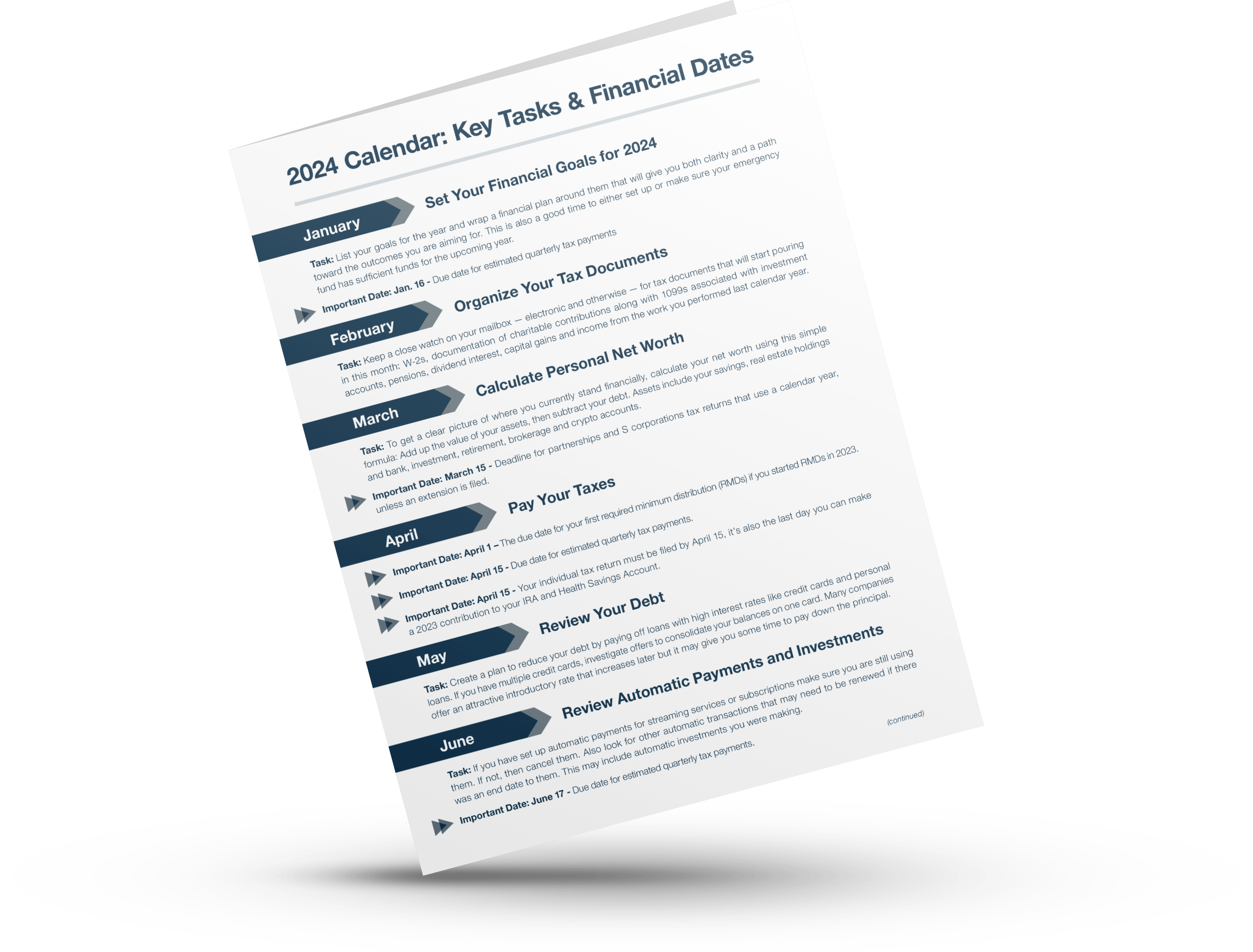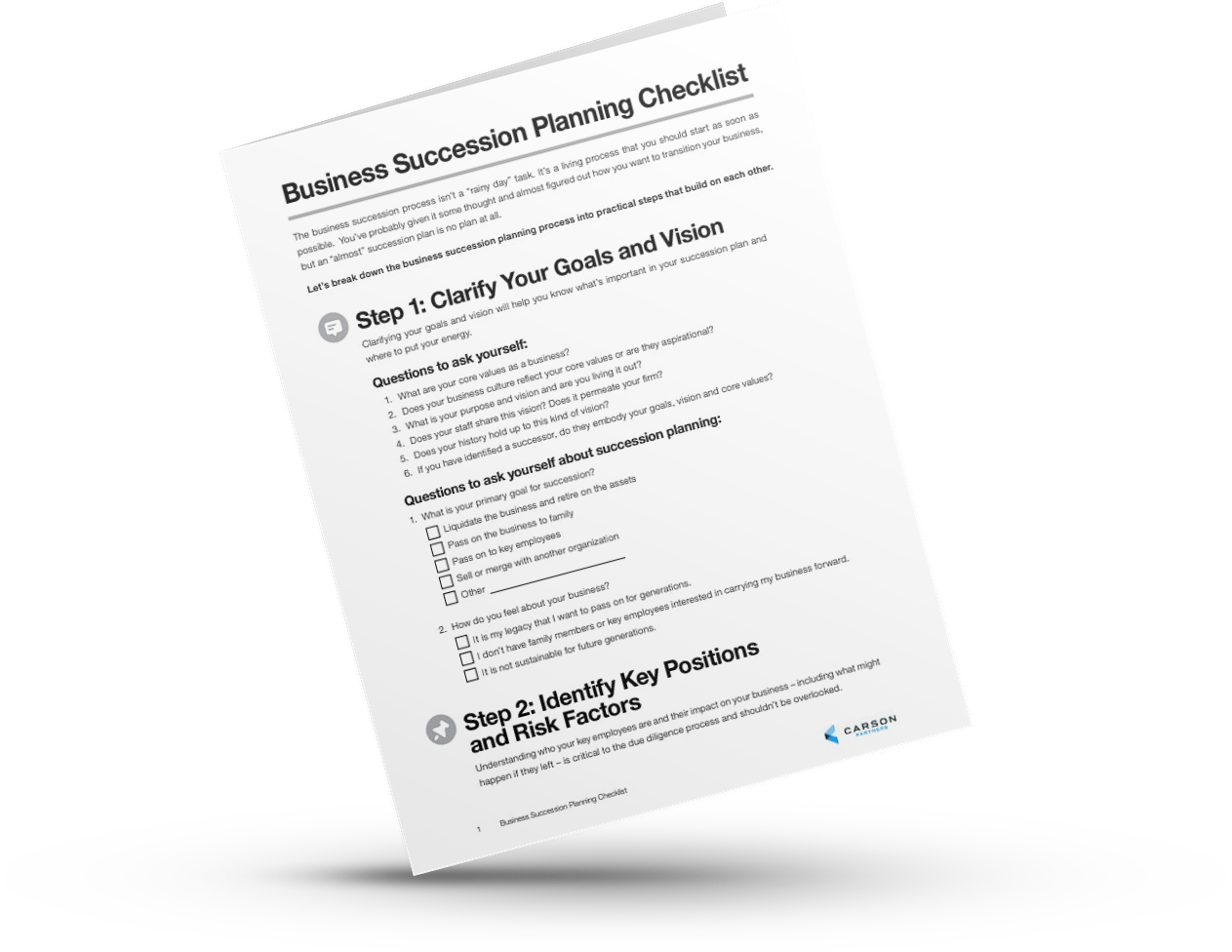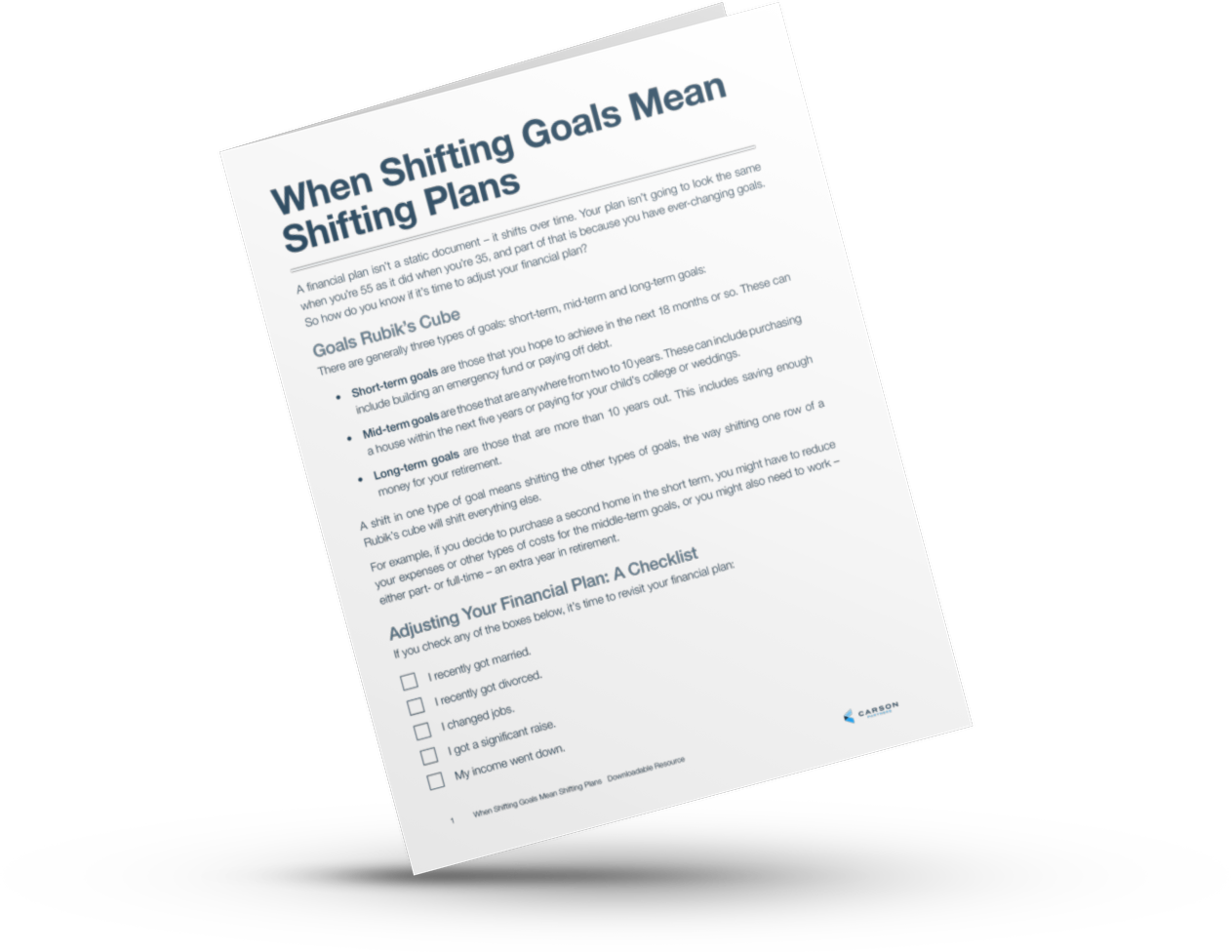Election Surprise Is Something New, Not 1968 Redux
President Joe Biden withdrew from the 2024 presidential race and endorsed Vice President Kamala Harris as the Democratic nominee, although the endorsement does not necessarily mean she will win the nomination. The change in the Democratic ticket does not change our fundamental view of the e …
Facts Vs Feelings Take 5 – Is Chaos Normal?
There’s been a lot of big political changes and a historic IT disruption over the last week. Is this chaos normal? Carson Group’s Chief Market Strategist Ryan Detrick and VP, Global Macro Strategist Sonu Varghese share their insights. Highlights include: The markets and economy hav …
Life Insurance Strategies for Business Owners
Owning a business can be like parenting. You’ve likely experienced many sleepless nights and spent a countless amount of energy on your “baby.” Like parenting, being a business owner can be an enriching journey and make life worth the trip.
Your Money
More3 Methods to Not Run Out of Money
What’s the #1 fear in retirement? Running out of money. Get our step-by-step guide to help ensure your assets last a lifetime. Download Guide
4 Pitfalls of Not Having a Financial Plan
There are some things in life you just can’t plan for: an unexpected illness, job loss, death of spouse, disability. And while experiencing one of these major events can drastically impact your life, having an effective financial plan can help ensure that it doesn’t ruin your financial well-being.
Mastering Your Finances: A Guide for New College Graduates
Congratulations, recent college graduate! You’ve worked hard to earn your degree, and now you’re ready to embark on the next chapter of your life. This is an exciting time – one filled with lots of changes, like starting a new career and learning how to manage living on your own …

2024 Calendar: Key Tasks & Financial Dates
Tackle 2024 with this month-by-month financial task list. We’ve also included important dates so you won’t miss key deadlines.
Your Business
MoreLife Insurance Strategies for Business Owners
Owning a business can be like parenting. You’ve likely experienced many sleepless nights and spent a countless amount of energy on your “baby.” Like parenting, being a business owner can be an enriching journey and make life worth the trip.
From Tax Efficiency to Retirement: Financial Planning for Small Business Owners
Financial planning for a small business gets more complicated every day. Business owners must navigate tax efficiency (and life under the new Tax Cuts and Jobs Act), retirement preparations for yourself and your employees, and succession planning. Get your financial plan in place today and …
8 Financial Planning Tips for Small Business Owners
Running a small business involves juggling multiple responsibilities. Managing the business’s finances is one of the most crucial aspects. Proper financial management can be the difference between a thriving business and one that struggles to stay afloat. Here are eight essential financial …

Business Succession Planning Checklist
You remember your first day of business. But what about your last day? Succession planning is more complex than it may seem. Our guide walks you through the details.
Your Retirement
MoreScared of Running Out of Money in Retirement? Here’s How to Avoid It
There are currently about half a million centenarians in the world. The U.S. leads the world in sheer number of centenarians, according to available data. People are living longer than ever, and this plays a significant role in how you plan for your retirement.
The Roth IRA Conversion: Why & How to Use This Strategy in Your Retirement Planning
Roth IRA conversions have emerged as a compelling strategy in retirement planning, offering a range of benefits and opportunities. Converting your tax-deferred retirement plans to a Roth IRA can be a strategic move, particularly for individuals seeking tax diversification, potential long-te …
6 Signs It’s Time to Ditch DIY Retirement Planning
Retirement planning is a journey that generally takes decades to complete and most of us start out along the do-it-yourself path. More than likely, your first step was to enroll in an employer-provided plan such as a 401(k) or setting up an individual retirement account, also known as an IRA.

Medicare and Managing Health Care Costs in Retirement
Health care costs in retirement aren't going anywhere. Naturally, as our bodies get older, it costs more to keep them running. Let's look at the parts of this vital program and how it plays a part in your financial plan.
Your Legacy
MoreChoosing the Right Trustee for Your Estate Plan
One of the most important decisions you’ll make when designing your estate plan is who to name in the various fiduciary roles: trustee, personal representative, executor and agent. While a critical decision, it’s often given significantly less thought than the distribution of your assets. B …
Revocable Living Trusts as part of an Estate Plan
Our latest webinar, Revocable Living Trusts as part of an Estate Plan with Carson Group’s Director, Trust Services Scott Berryman and Manager & Sr. Wealth Planner Tom Fridrich is now available for viewing on-demand.
Estate Planning
Often, people believe that estate planning only benefits the very wealthy, but nothing could be further from the truth. It’s something everyone needs to engage in regardless of age, estate size or marital status. If you have a bank account, investments, a car, home or other property—you hav …

A Guide to Gifting to Your Heirs
Gifting to your loved ones now or posthumously each carries their own positives and negatives as they relate to your estate plan, taxes, your goals and your legacy.
Your Freedom
More7 Economic Myths Busted
By Ryan Detrick, Chief Market Strategist We’ve been hearing many of the same myths over and over, yet we don’t think they are the big worry that the media and many make them out to be. These are legitimate concerns and have many investors worried, but we think the chances of them becoming l …
Investing in Your Child’s Financial Future: Helping Kids Develop Strong Money Management Skills
Gaining financial literacy at a young age is a vital key to finding financial freedom later in life. Give your kids the lessons they need now to make better decisions about money in the future.
Financial Resolutions to Take Into the New Year
Tom Fridrich, JD, CLU, ChFC®, Senior Wealth Planner Thinking about making some New Year’s resolutions? Add financial wellbeing to your list. It’s a terrific time to identify goals and opportunities that may put you in a better financial position — not only in the upcoming year, …

When Shifting Goals Mean Shifting Plans
Your financial plan shouldn't look the same at 55 as it did when you were 35, right? So how do you know when it's time to adjust your plan?
Market & Investments
MoreElection Surprise Is Something New, Not 1968 Redux
President Joe Biden withdrew from the 2024 presidential race and endorsed Vice President Kamala Harris as the Democratic nominee, although the endorsement does not necessarily mean she will win the nomination. The change in the Democratic ticket does not change our fundamental view of the e …
Facts Vs Feelings Take 5 – Is Chaos Normal?
There’s been a lot of big political changes and a historic IT disruption over the last week. Is this chaos normal? Carson Group’s Chief Market Strategist Ryan Detrick and VP, Global Macro Strategist Sonu Varghese share their insights. Highlights include: The markets and economy hav …
Market Commentary: Small Caps Finding Support and Three Important Manufacturing Trends
President Biden Withdraws from Presidential Race

2023 Market Outlook Report
Will the bull market continue in 2024? What about a recession? What will the Fed do? We take a deep dive into our outlook for 2024 in Carson Investment Research’s Outlook ‘24: Seeing Eye to Eye.
In the News
More3 Roth Conversion Traps To Avoid After The SECURE Act
Roth conversions can be a powerful tax and retirement planning technique. The idea behind most Roth conversions is to take money from an IRA and convert it to a Roth IRA. Essentially, you’re paying taxes today instead of paying taxes in the future.
10 Common Estate Planning Mistakes (and How to Avoid Them)
Estate planning and end of life planning are about taking control of your situation. Death and long-term care later in life might be hard to fathom right now, but we can’t put off planning out of fear of the unknown or because it’s unpleasant. Don’t wait for life to happen to you, though.
4 Ways To Improve Your Estate Plan
Most people want to plan for a good life and a good retirement, so why not plan for a good end of life, too? Let’s look at four ways you can refine your estate plan, protect your assets and create a level of control and certainty for your loved ones.
